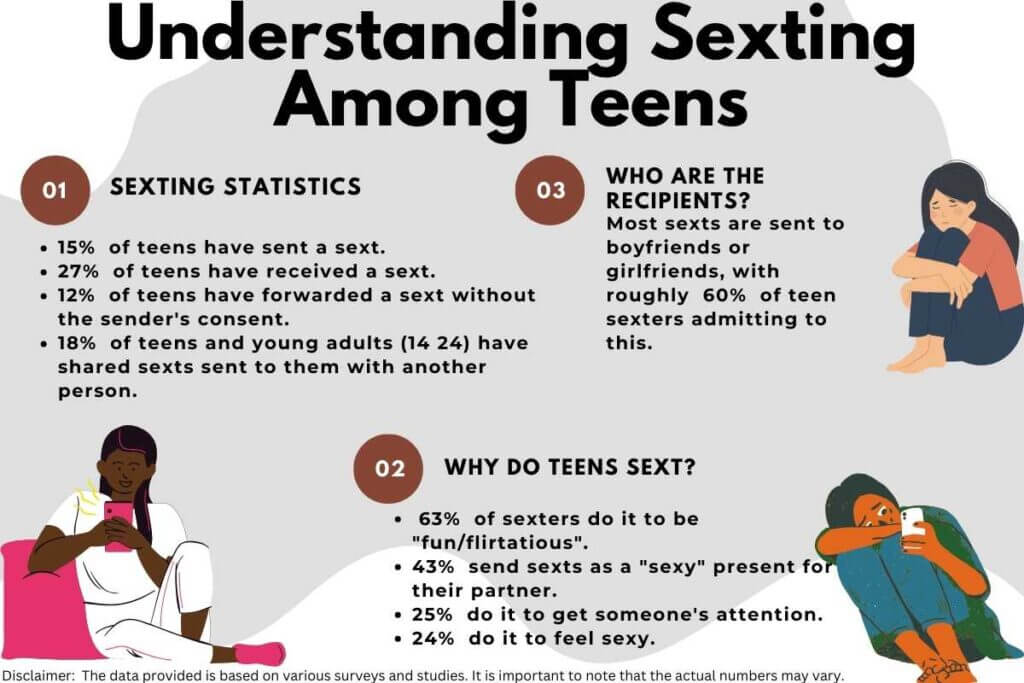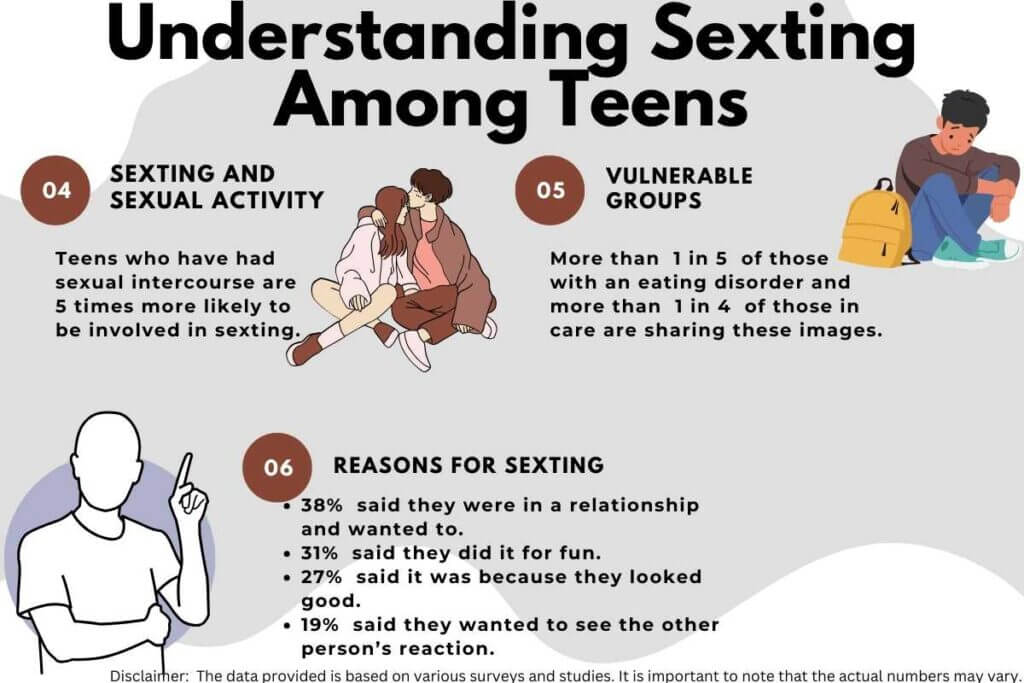
Unlock Success With These 5 Best Websites For Interview Preparation
April 20, 2024
The Top Mutual Fund Apps in India: Find the Best Mutual Fund App for Your Investments
May 4, 2024Addicted to Sexting? Here’s How to Actually Stop and Feel Better
Today, we are tackling a pretty raw topic straight off the bat – teen sexting or sexting in teens. It is plain to see from our frenzied thumbs tapping away on our smartphones, sending messages and images, that there is a lot at play beneath those screens.
Have you noticed how sexting’s become a thing nowadays, especially with us teens? It is that whole sending or getting messages, photos, or videos that are pretty racy, all through our phones and on social platforms. I get it, it might seem like just a bit of fun at first, but it is super easy to get carried away and, before you know it, it can turn into something you did not expect.
We are all at this point in our lives where we are figuring ourselves out, including our sexuality, and just trying to fit in with everyone else. With our phones practically glued to our hands and this constant pressure to match up to what we see online, it is not shocking that a lot of us end up in the sexting loop.
It is important to understand that while exploring and connecting is part of growing up, we have also got to look out for ourselves and each other. Keeping an open conversation and knowing where to draw the line can make all the difference.
You might think, “It’s all just pictures and words,” but it can often become much more that you did not expect, leading down a path as risky as it is addictive.
The Troubling Trend of Teen Sexting
Before we get into the details, we need to understand the basics. So some of you may be wondering, what is sexting? Well, sexting is the act of sending or receiving sexually explicit or suggestive messages, images, or videos via text or messaging apps. You may think of flirty texts, revealing selfies, and other racy digital exchanges.
With the rise of smartphones, and social media, now it is more accessible to all especially teenagers who get addicted to it pretty quickly.
And now as you may have predicted, sexting addiction is a compulsive urge to engage in sexting and just like any other addiction, it starts slowly. Sexting in teens starts as fun amongst their friends and partners and it becomes a never-ending cycle to break away. Lots of teen sexting occurs to get engaged to get attention and validation amongst friends and groups. And eventually, it affects to your mental health as well.
The increasing trend of sexting among teenagers is understandably worrisome. It’s easy to see how what starts as an innocent curiosity or a quest for approval can quickly turn into an obsession. This can have far-reaching effects, impacting not just their relationships and self-worth, but potentially their future as well.


Understanding Teen Sexting
Sexting Addiction becomes very complex, especially when technology and sexuality collide. For many, the instant kick that comes from teen sexting can be similar to drugs and high-stakes video games. The joy of a double tick likes and replies light up the same pleasure nerves as other addictive substances. However, the consequences of sexting in teens are far-reaching and serious. From your compromising messages and images become public (which is a huge risk), it can also degrade your self-worth and trust in others if you have a compulsive need to sext.
Teen sexting can quickly become a time-consuming focused activity, affecting everything from academic performance to mental health. If you are engaging in sexting, it can even distract you and some of you may find it difficult to break from this cycle.
What is Sexting Addiction?
Sexting addiction is a behavioral addiction that involves excessive and compulsive engagement in sexting, despite negative consequences to one’s life, relationships, and well-being. It is a pattern of behavior that can lead to feelings of guilt, shame, and anxiety, and can negatively impact daily functioning. Sexting addiction is not a diagnosable mental health condition, but it can be a symptom of underlying issues such as sexual addiction, depression, or anxiety.
Signs You’re Addicted to Sexting
If you’re wondering if you’re addicted to sexting, here are some signs to look out for:
You spend excessive amounts of time sending or receiving sexts, often to the point of neglecting responsibilities and relationships.
You feel anxious or irritable when unable to access your phone or send sexts.
You use sexting as a way to cope with stress, anxiety, or other emotions.
You feel a strong urge to continue sexting despite negative consequences, such as damaged relationships or feelings of guilt and shame.
You’ve tried to cut back on sexting but find it difficult to control your behavior.
Peer Expectations and Society: Sexting Addiction
Teen sexting does not happen out of the blue. Peer pressure and social norms are in the mix, too. Sometimes it feels like everyone is doing it—so should you, right? The reality is that these pressures can nudge us towards behaviours we are not entirely comfortable with, and then keep us there under the guise of normalcy.
We have all felt the pull of fitting in, but sometimes, it is not the smart choice. These pressures can be like an undertow, silently strong and ready to drag us under at any moment if you have not set clear boundaries.
Why Teens Engage in Sexting
Teens engage in sexting for a variety of reasons, including:
To explore their sexuality and express themselves in a way that feels safe and private.
To feel connected to their peers and fit in with their social group.
To seek attention and validation from others.
To cope with stress, anxiety, or other emotions.
To experiment with their identity and boundaries.
It’s essential for parents, educators, and mental health professionals to understand the reasons behind teen sexting and to provide guidance and support to help teens navigate the risks and consequences of sexting.
When Teen Sexting Goes South
Teen Sexting, especially when it involves individuals under the age of consent, can cross into illegal territory. It is crucial to understand the legal implications, not just for protection, but for actually knowing the very real consequences of youthful actions that might not seem so “big deal” at the time.
You see, there is a lot more to consent and privacy than meets the eye, especially in this interconnected, data-driven age. It is not just about ‘if you wouldn’t say it in person, don’t text it’. It is about understanding that there is a bigger picture, and every message could become part of your story, for better or for worse.
Recognizing and Preventing Sexting Addiction: What Sexting Addiction Is
Now, as I promised, I am not just here to scare you… but we have got to talk about prevention and action, haven’t we? Recognizing the signs of a sexting addiction is the first step. Once you recognize these signs, you can seek help, stop the behaviour, or make lifestyle changes to counteract your urges. Engage in discussions, set norms, and establish trust. Technology can be a wondrous thing when we use it right.
And most importantly, never forget the cosmic power of ‘NO.’ It is not a magic word; it is a shield. A shield against overstepping boundaries, against pressures, and against a digital world that sometimes spins faster than we can manage.
Treatment Options for Sexting Addiction
Treatment for sexting addiction typically involves a combination of therapy, support groups, and self-help strategies. Here are some treatment options to consider:
Cognitive-behavioral therapy (CBT) to address underlying issues and develop healthy coping mechanisms.
Family therapy to repair relationships and improve communication.
Support groups, such as Sex Addicts Anonymous, to connect with others who are struggling with sexting addiction.
Self-help strategies, such as mindfulness, self-care, and boundary-setting, to manage cravings and prevent relapse.
Medications, such as selective serotonin reuptake inhibitors (SSRIs), to manage symptoms of depression, anxiety, or other underlying conditions.
Recovery and Relapse Prevention
Recovery from sexting addiction requires a commitment to ongoing treatment and self-care. Here are some strategies to help prevent relapse:
Develop a relapse prevention plan with your therapist or support group.
Practice self-care and stress management techniques, such as exercise, meditation, or yoga.
Set boundaries and limits on your phone use and online activity.
Seek support from friends, family, or a support group when you need it.
Engage in activities that promote healthy relationships and intimacy, such as couples therapy or social skills training.
Remember, recovery from sexting addiction is a journey, and it’s essential to be patient, persistent, and compassionate with yourself as you work towards healing and growth.
Stay Safe, Stay Smart
We need to be talking about this more especially in schools, in families, or in friendship circles. Teen Sexting might seem isolating, but it is a shared experience, with shared risks and responsibilities.
We are not dishing out scare tactics, we are fostering awareness. Sexting may be the current tech-tinged trend, but it is also a vulnerable vein in us that we need to guard and guide. We might not have all the answers, but we have got to keep the lines open.




